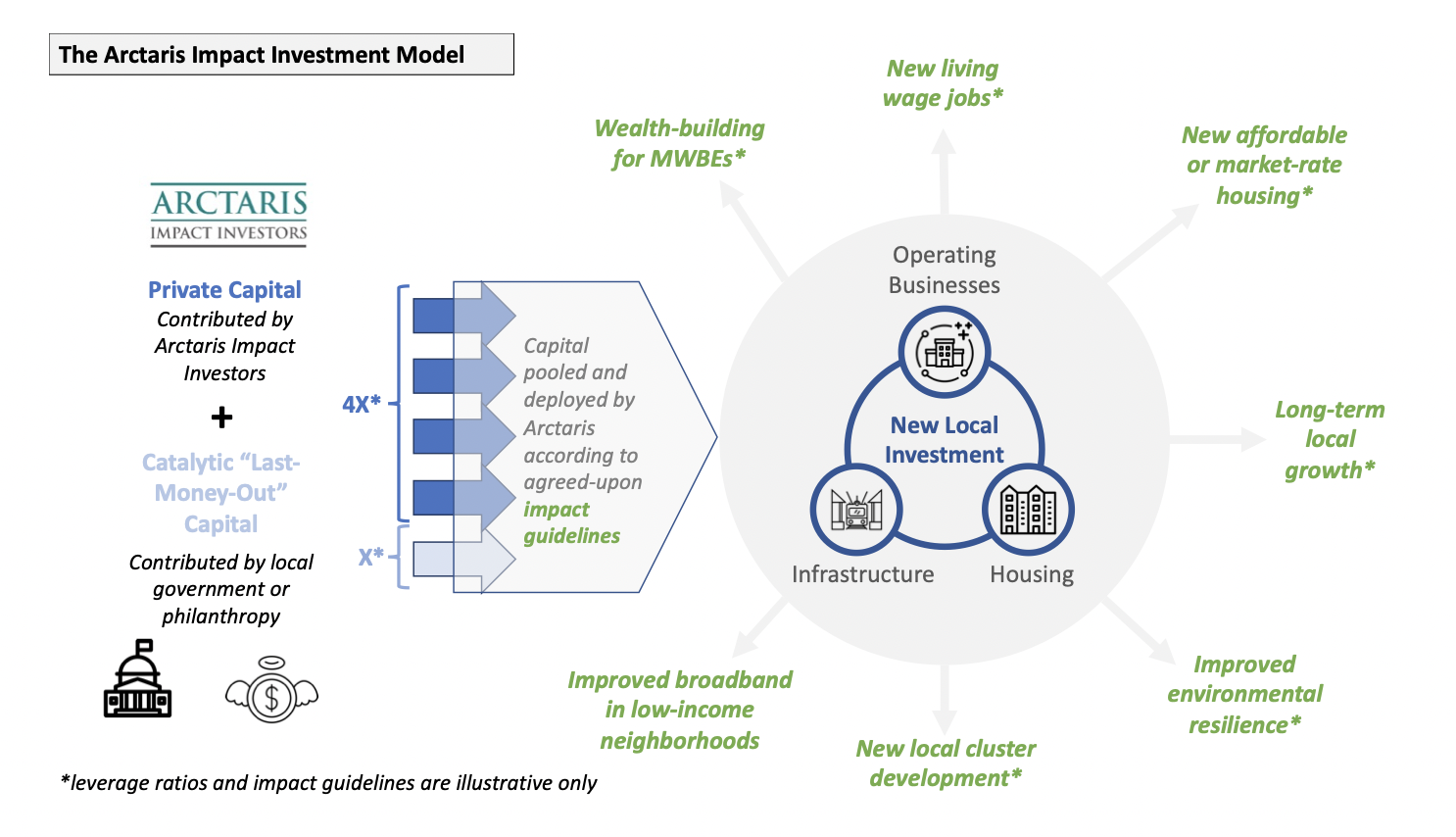A Conversation with Jonathan Tower, Arctaris Impact Investors
Below is the Nowak Metro Finance Lab Newsletter shared biweekly by Bruce Katz.
Sign up to receive these updates.
June 2, 2023
As many readers of New Localism know, I have grown increasingly concerned over the past few years about the narrow scope of federal investments that are now flowing through the US. The use of the term “narrow” may seem odd, given the unprecedented volume of federal funding for investments in infrastructure, climate, manufacturing, and innovation. This funding is long overdue and has the potential to accelerate the transition of our economy to a more inclusive and sustainable future.
The fact is, however, that the federal government has over-indexed on investments in nation building and under-indexed on investments in community building. There is relatively little new funding for a wide range of activities that are critical to urban, metropolitan, and rural prosperity – affordable housing, downtown revival, commercial corridor regeneration, just to name a few.
What this means is that there is an enormous need for innovation in project finance. Many block-and-tackle community projects require complex capital stacks that combine multiple types of public, private, and philanthropic resources. Such financial partnerships are often difficult to build and steward, and unfortunately, the number of institutions and investors comfortable with such partnerships are few and far between.
To that end, it is a privilege to have a chat with Jonathan Tower, the founder of Arctaris Impact Investors. I first met Jonathan four or so years ago, when a broad network of financiers, developers and city leaders were trying to make the most out of Opportunity Zones. I was impressed then by Jonathan’s creativity and commitment, and continue to believe that his firm is at the cutting edge of financial innovation.
Jonathan, thank you for joining me today. To bring all our readers up to speed, can you tell me a little about Arctaris?
Arctaris was founded in 2009 with a commitment to investing in underserved communities nationally. Since then, Arctaris has partnered with the Kresge Foundation, the Institute for a Competitive Inner City and other government and foundation partners to create a series of impact funds that deploy more than $100 million annually into community revitalization projects. Today, Arctaris is the largest manager of impact-focused Opportunity Zone funds and, also, is a Community Development Entity certified by the U.S. Department of Treasury.
At its most basic level, the model is simple: if a local government, foundation, or other partner is willing to co-invest and accept additional risk, Arctaris will bring considerable private capital to invest in local businesses, real estate, and infrastructure. The investment criteria are co-created with the community co-investor, often including stipulations regarding job creation, investments in minority- and women-owned businesses, and other impact requirements. The investment and impact structure vary to fit the needs of the community and evolve based on market conditions and public incentives.
We’ve created this visual to illustrate how we use public and philanthropic resources to leverage private investments:

Walk us through a few examples of Arctaris’ investments.
体育
The success of the fund in Erie, PA was made possible by a set of other policy and implementation changes, including the creation of a new, non-profit development corporation (EDDC), which was modeled after 3CDC in Cincinnati’s Over-the-Rhine neighborhood.
The Erie work illustrates the power of local networks; for Arctaris’ model to have the largest impact, local leaders must organize to deliver aligned programs, policies, and investments.
The Erie investment is a game changer. What are other flagship investments?
基于“增大化现实”技术
What’s interesting about your work is that it spans sectors, with investments in mixed-use facilities, housing and operating businesses. How does all this add up?
Arctaris’ unique approach to financing is especially useful to communities in the current context for several reasons.
Fi
Second, it goes where other money can’t. Arctaris’ financing can address places where federal or other public dollars fall short. In the current context, this is especially important in housing, where the federal government has not made new investments of the same scale as those in infrastructure, manufacturing, and climate.
Third, Arctaris provides capacity in execution that local entities may not have to ensure that dollars are smartly managed and invested. In many places, Arctaris hires local staff to support the rollout of its funds. Arctaris’ model also doesn’t require the same hassle that legacy federal tax incentives like NMTCs and LIHTCs carry, making the process easier and smoother for local partners.
Finally, Arctaris offers tailored Investment criteria and a willingness to Innovate. Arctaris works with local program partners to design specific impact criteria for investments, which can range from requirements around diversity in business ownership to targeting of especially low-income neighborhoods to support for an economically important but nascent local industry cluster. Arctaris is also flexible in how it structures its local funds: it can work with public, private, and philanthropic entities with co-investments structured as grants (e.g., philanthropy and ARPA funds), PRI investments (foundations), or equity capital (e.g., CDFIs). Arctaris can work within existing programs, like the American Rescue Plan Act or the State Small Business Credit Initiative, or work with partners to create new funding mechanisms.
Where do you go next?
The current federal funding climate, while solving some problems for localities, has created others. In sectors where federal funding is sparse, communities must get creative and partner with private funders to make the math work for the projects they deem important. We are actively looking for the right government, corporate and philanthropic actors at the local level to create partnerships that maximize the potential for social and economic impact. We see our funding as a catalyst for additional public, private and civic investment as well as municipal tax generation.
We believe this is an exciting moment and look forward to working with more communities across the country.
Thanks, Jonathan for an enlightening conversation!